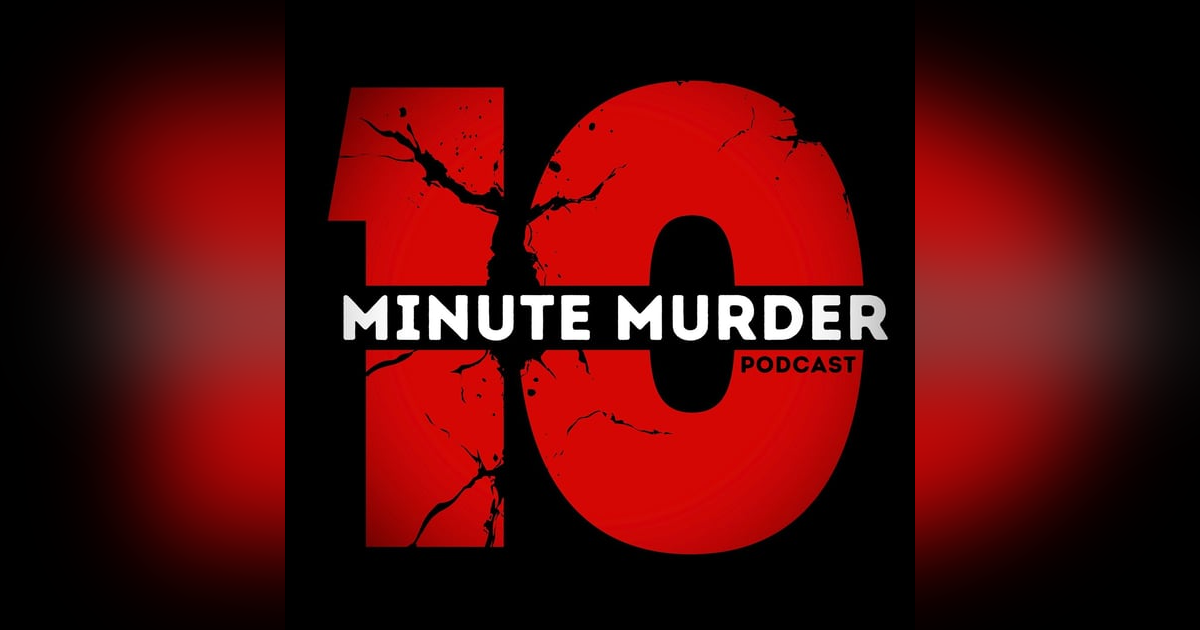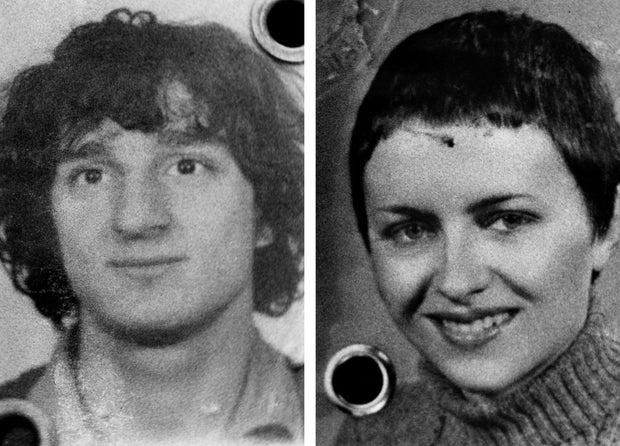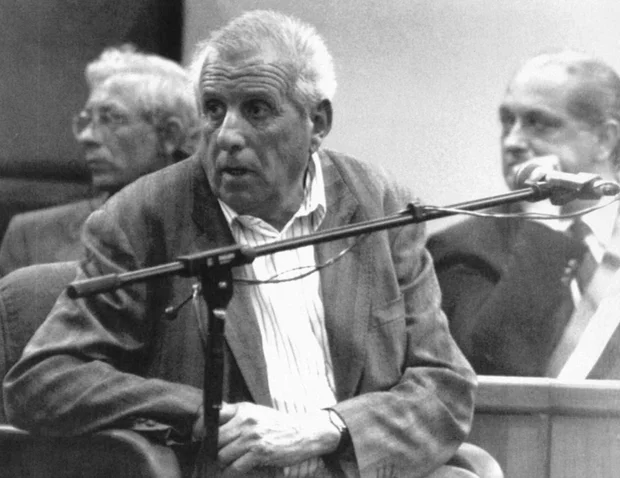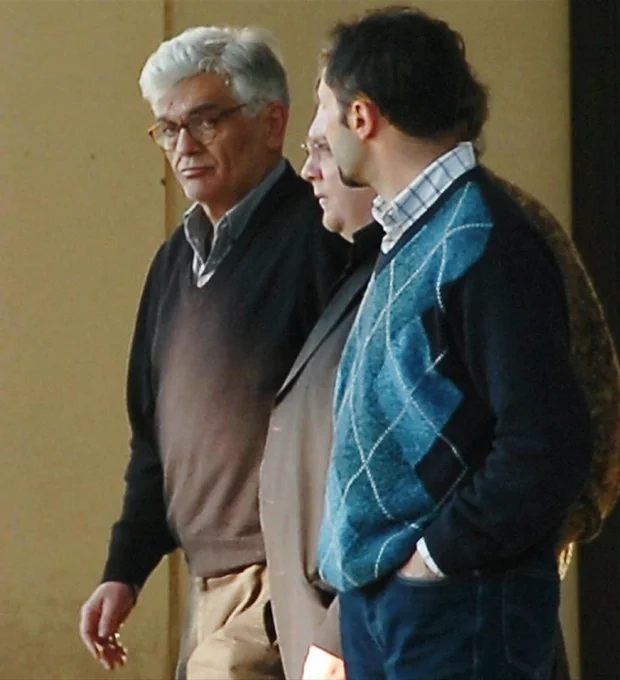The Monster of Florence: Italy's Unsolved Serial Killer Case That Stumped Police for 50 Years
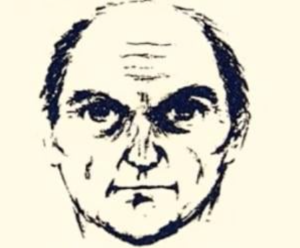
Between 1968 and 1985, someone hunted young couples in the hills outside Florence, Italy. Same gun. Same ritual. Sixteen victims. The police arrested the wrong people again and again while bodies kept piling up. In 2024, DNA evidence proved what everyone suspected: they never caught the real killer. This is the story of Il Mostro di Firenze.
The Monster of Florence: How Italy's Most Twisted Serial Killer Got Away With Murder for Decades
Sign up for the 10 Minute Murder newsletter.
A Summer Night in 1968 Changes Everything
Barbara Locci was known around her small Italian town near Florence. At 32, she had a reputation for stepping out on her husband Stefano, and on August 21, 1968, she was parked in a secluded spot called Castelletti di Signa with her latest lover, Antonio Lo Bianco. What made this night different from every other secret rendezvous was that Barbara's six-year-old son was asleep in the back seat of the car.
Someone walked up to that vehicle and shot both Barbara and Antonio to death while her little boy slept just feet away.
The child woke up the next morning, climbed out of the car, and walked to a nearby farmhouse. When he knocked on the door, he told the people who answered a sentence that still haunts the Italian psyche: "My mama and my uncle are dead in the car."
Police looked at the evidence and saw exactly what they expected to see: a jealous husband, a cheating wife, and a crime of passion. They arrested Stefano Mele, Barbara's husband, and the case was closed. Mele was convicted in 1970 and sent to prison.
Problem solved, right?
The Gun That Wouldn't Stay Quiet
Four years later, on September 14, 1974, a young couple named Pasquale Gentilcore and Stefania Pettini were found dead in their car near Rabatta di Borgo San Lorenzo. They'd been shot. But this time, the killer had done something else. Stefania's body had been pulled from the car and mutilated. Specific body parts were missing. The violence was extreme and organized.
When ballistics came back, investigators got news that should have made their blood run cold: the bullets matched the ones from the 1968 murders. The exact same gun. A .22 caliber Beretta that had a unique signature.
Stefano Mele was still in prison when this happened. He couldn't have pulled the trigger. That meant someone else had killed his wife and her lover back in 1968, and now that same person was killing again. The gun was the key. Whoever had that .22 Beretta was the real killer, and they'd been active for at least six years.
Someone Is Hunting Couples in the Tuscan Hills
Over the next eleven years, the pattern continued. Always couples. Always in remote parking spots in the hills outside Florence where young people went to be alone. The killer would approach the car and fire that same .22 Beretta through the windows. After the shooting stopped, the real horror began.
If you were a young couple in Florence during the 1970s and 80s, the Monster of Florence wasn't some abstract fear. It was real. People stopped going to lovers' lanes. Parents locked their doors. The entire social fabric of the region changed because no one knew who this person was or when they'd strike again.
The murders followed a pattern, but there were long gaps between them:
June 6, 1981: Giovanni Foggi and Carmela De Nuccio were killed in Scandicci. Carmela's body showed the same ritualistic mutilation. This was when police finally, officially admitted they had a serial killer on their hands. Seven years after the second attack, they were finally connecting the dots.
October 23, 1981: Just four months later, Stefano Baldi and Susanna Cambi were found dead in Calenzano.
June 19, 1982: Paolo Mainardi and Antonella Migliorini became victims number eleven and twelve in Montespertoli.
September 9, 1983: This attack was different. The victims were two German tourists, Wilhelm Meyer and Jens Rüsch. Both were male, though one was wearing women's clothing. The killer apparently made a mistake in the dark, or maybe they attacked anyway.
July 29, 1984: Claudio Stefanacci and Pia Rontini were murdered in Vicchio. The mutilations were becoming more extreme with each attack.
September 8, 1985: The final known murders. Jean Michel Kraveichvili and Nadine Mauriot, a young French couple, were killed near Scopeti. The mutilations were the worst yet. This crime scene was later discovered to be near property connected to a suspect, but by then, the investigation was already completely off the rails.
Sixteen people dead. Eight double homicides. One gun. One killer. Or was it?
Jean Michel Kraveichvili and Nadine Mauriot
The Sardinian Trail Goes Absolutely Nowhere
After Stefano Mele was cleared, investigators needed a new theory. They came up with one based on Mele's inconsistent testimony. He'd mentioned several names over the years, men he claimed might have been involved. Many of these men were Sardinian, including Francesco Vinci, who had been one of Barbara Locci's lovers.
Police became convinced they were looking for someone from Sardinia. They arrested Vinci and others. They held some of these men for over a year. Resources poured into this theory. It became the focus of the entire investigation through most of the 1980s.
Then people kept dying.
While the Sardinian suspects sat in jail, the Monster killed again. Same gun. Same ritual. The ballistics didn't lie. In 1989, authorities had to formally abandon what they called the "Sardinian Trail" and clear all the suspects. They'd wasted nearly a decade chasing the wrong people while the real killer walked free and kept murdering.
This is the part that keeps me up at night. The peak of the violence happened between 1981 and 1985. Four double homicides in four years. The killer was escalating, becoming more confident, more brutal. And during this entire period, police were focused on people who couldn't possibly be responsible because they were literally in custody or had been cleared by the timeline.
Enter Pietro Pacciani: The Farm Worker Who Maybe Did It?
By the 1990s, investigators were desperate. They needed someone, anyone, to make this nightmare make sense. They found Pietro Pacciani.
Pacciani was a farm laborer who lived in the area. He had a history of violence and sexual assault. On paper, he looked like a viable suspect for a sexually motivated serial killer. There was one major problem: the forensic evidence connecting him to the crimes was weak at best.
In 1994, Pacciani was convicted of seven of the eight double homicides. The conviction was based almost entirely on circumstantial evidence and his violent history. In 1996, an appeals court overturned the conviction. Pacciani was acquitted.
The case wasn't over, though. The Supreme Court ordered a new trial. But before it could happen, Pacciani died in 1998. Because he died before the judicial process concluded, Italian law doesn't consider him innocent or guilty. His legal status exists in a weird limbo.
Here's what's frustrating about the Pacciani case: investigators tried to fit this complicated, 17-year series of murders into a neat box with one "Monster" who worked alone. But the evidence and the judicial outcome both suggest that theory doesn't hold up.
The Snack Buddies Theory Gets Even Weirder
After Pacciani's conviction was overturned, police developed a new theory. What if Pacciani didn't work alone? What if there was a group?
They focused on Pacciani's friends: Mario Vanni, Giancarlo Lotti, and Francesco Calamandrei. The group became known as the "compagni di merende," which translates to "Snack Buddies." The name came from something Vanni said when questioned. He claimed they simply got together to eat snacks. The Italian press ran with it, and the name stuck.
In 1998, police arrested Vanni and Lotti. Then something big happened: Lotti confessed. He admitted to being involved in the attacks and implicated the others.
In 2000, Vanni and Lotti were convicted. But here's the catch: they were only convicted for four of the eight double homicides. Half the murders. Calamandrei was tried separately and acquitted in 2008.
So let me get this straight. Police spent decades investigating. They convicted three men total. Those men were found guilty of involvement in only four out of eight attacks. That means the other four attacks, including the very first one in 1968 and the brutal finale in 1985, remain legally unresolved under this theory.
The convictions didn't bring closure. They raised more questions. If Vanni and Lotti were involved in only half the murders, who committed the other half? Who actually owned and fired that .22 Beretta across seventeen years? And why were the convictions so limited if these men were really the Monster?
Mario Vanni
Mario Spezi
When Prosecutors Go Full Conspiracy Theory
The ritualistic mutilations bothered everyone involved in this case. The killer consistently removed the same specific body parts from female victims. Some investigators became convinced this wasn't about sexual sadism at all. They thought it had to be connected to something bigger. Maybe a satanic cult. Maybe an elite conspiracy.
Prosecutor Giuliano Mignini became the most vocal proponent of this theory. He believed the murders were committed by an occult ring made up of wealthy, powerful people. He focused heavily on the 1985 death of Francesco Narducci, a doctor and Freemason who allegedly drowned. Mignini theorized that Narducci was the real Monster and that his death was faked to cover up his murder by conspirators who needed him silenced.
This theory expanded massively. Eventually, Mignini indicted 20 people, including government officials and law enforcement officers, on charges related to covering up Narducci's death. In 2010, all charges were dropped, partly because the statute of limitations expired. Narducci's family maintained that he died by suicide after receiving a serious medical diagnosis.
The investigation became a war zone. Different prosecutor offices fought each other. Mignini even went after journalists. Mario Spezi, who co-wrote a book about the case with American author Douglas Preston, was arrested and imprisoned on charges including libel. Mignini later suggested that Preston was orchestrating a media campaign against him.
The pursuit of grand conspiracies showed how completely the investigation had collapsed. Instead of following forensic evidence and building a case based on facts, prosecutors were spinning elaborate theories about secret societies and government cover-ups. The failure to catch the real killer had created a vacuum, and that vacuum got filled with paranoia.
The Evidence Everyone Ignored
While prosecutors chased conspiracy theories, some evidence sat on a shelf gathering dust. In the 1980s, police had searched the property of a man named Giampiero Vigilanti. Vigilanti was a friend of Pietro Pacciani.
What did they find? Newspaper clippings about the Monster murders. That's interesting but not necessarily incriminating. People collect news stories about crimes all the time. But they also found bullets. The same type used in the serial homicides.
This evidence should have been huge. But it went nowhere. Vigilanti was never seriously investigated or charged. Lawyers representing the victims' families have been calling for a renewed investigation into Vigilanti for years. He's now in his 90s, and they believe he represents the missing link between Pacciani's circle and whoever actually possessed that .22 Beretta.
2024: DNA Says Everyone Was Wrong
In August 2024, medical researchers conducted advanced DNA analysis on bullets collected from three of the eight double homicides. They found male DNA on those bullets. The same male DNA across multiple crime scenes.
That DNA does not match Pietro Pacciani.
Read that again. The DNA on bullets from three separate attacks doesn't match the man who was convicted and whose conviction was overturned, or any of the other men who were convicted for parts of the crime spree.
This is objective, forensic evidence that proves there was at least one other person involved. Someone who handled those bullets. Someone who was present at multiple crime scenes. Someone who has never been identified or charged.
The DNA finding confirms what many analysts and victims' families have been saying for decades: the people convicted for these crimes were not the actual shooter. They might have been involved in some capacity, but the person who consistently used that .22 Beretta across seventeen years is still unknown.
The focus now is on comparing this DNA sample to suspects like Giampiero Vigilanti and running it through national databases. If they get a match, this case could finally be solved after more than 50 years.
Why This Case Matters Beyond the Body Count
The Monster of Florence investigation is a masterclass in how not to investigate a serial murder case. At every turn, police and prosecutors made choices that derailed the investigation:
They assumed the first murder was a crime of passion and convicted the wrong man, giving the real killer six years to disappear into normal life before striking again.
They fixated on ethnicity and pursued the Sardinian Trail for nearly a decade while the killer remained active. During the peak violence period from 1981 to 1985, when they could have been following real leads, they were focused on people who were provably innocent.
They tried to force the evidence to fit simple narratives. First it was one jealous husband. Then it was one Monster working alone. Then it was a small group of rural men. Then it was an elite occult conspiracy. None of these theories explained all the facts.
They ignored or downplayed forensic evidence that didn't fit their preferred theories, like the bullets and newspaper clippings found at Vigilanti's property.
The judicial system convicted people for crimes they may or may not have committed, but even those convictions only covered half the total murders. The legal outcome created more questions than answers.
The result? Sixteen people are dead. Multiple innocent people were arrested, tried, and imprisoned. The actual person who pulled the trigger and performed those ritualistic mutilations was never definitively identified. That person either died without ever being connected to the crimes, or they're still alive today.
The Question That Won't Go Away
Who owned that gun?
Everything comes back to the .22 caliber Beretta. It's the one constant across seventeen years and eight double homicides. Ballistics don't lie. Whoever possessed that weapon committed these murders or was directly involved in all of them.
The gun was used in 1968 when Stefano Mele was later wrongfully convicted. It was used in 1974 while Mele was in prison. It was used throughout the 1980s while Sardinian suspects sat in jail. It was used in crimes that Vanni and Lotti were never convicted of committing. And now we know that DNA on bullets from multiple scenes doesn't match any of the convicted suspects.
Someone had that gun. Someone kept it for nearly two decades. Someone had access to it across multiple attacks. Someone developed the ritualistic pattern and stuck to it. That person's identity remains a mystery.
The Legacy of Il Mostro
The Monster of Florence case inspired Thomas Harris when he was writing "Hannibal." He traveled to Florence, observed the trials, and incorporated elements of the case into his novel and the character of Hannibal Lecter. The chaos and complexity of the real investigation influenced his fictional portrayal of Italian law enforcement.
The case continues to generate books, documentaries, and news coverage. Every few years, there's a new development or a renewed call for investigation. The 2024 DNA discovery brought it back into international headlines.
But beyond the cultural impact, this case represents something important about the limits of criminal investigation. It shows how tunnel vision, institutional pride, and the pressure to close a case can lead to decades of failure. It shows how focusing on convenient suspects instead of following evidence allows killers to escape justice.
The victims' families have spent decades fighting for answers. Some have passed away without ever knowing who killed their loved ones. Their advocates continue to push for a reopened investigation, particularly into suspects like Giampiero Vigilanti.
As one lawyer representing the families said, "Telling the truth, and only that, is the only way to bring justice to the victims."
Where Things Stand Today
Giampiero Vigilanti is in his 90s. If he knows something about that .22 Beretta or about the murders, time is running out to get those answers.
The unidentified male DNA from the 2024 analysis exists in a database somewhere. If investigators can find a match, everything could change overnight.
The case files contain decades of evidence, testimony, and forensic analysis. Somewhere in all that information might be the connection everyone missed.
But as of right now, the Monster of Florence remains unidentified. The person who terrorized the hills outside Florence for seventeen years, who killed sixteen people, who performed ritualistic mutilations, and who somehow evaded capture despite multiple investigations and trials, has never been definitively caught.
That's the reality. One of Europe's most prolific serial killers got away with it. And unless the DNA leads somewhere, they always will.
